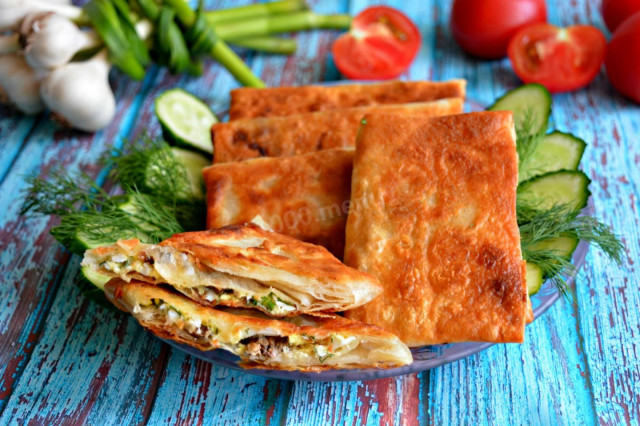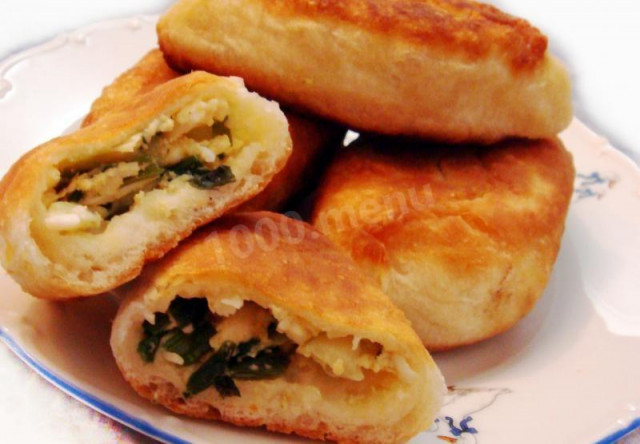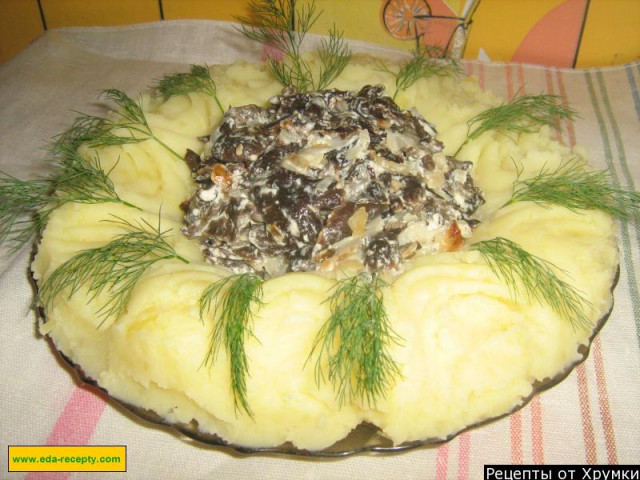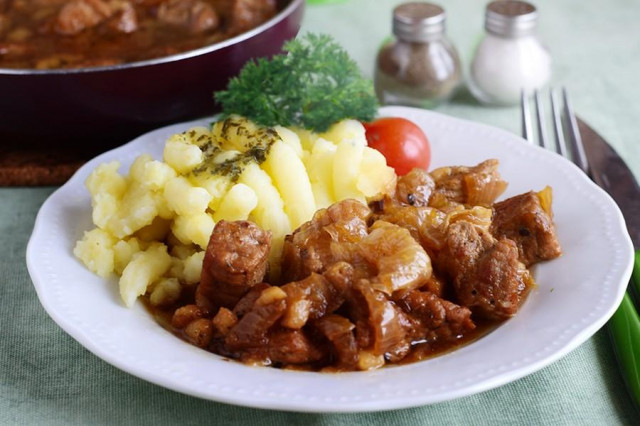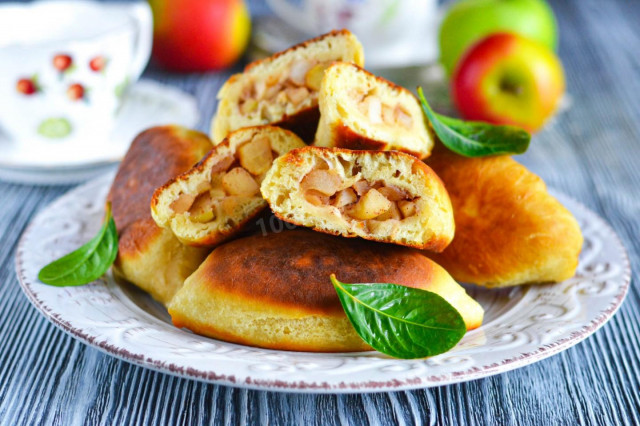Composition / ingredients
Cooking method
1. First of all, we will prepare the filling for the lavash envelopes. To do this, boil the eggs, then peel them from the shell and grate them on a coarse grater.
2. Let's take cheese, any cheese will do, even melted or a mixture of two types of hard and melted cheese. Grate the cheese on a fine grater.
3. Garlic is divided into cloves, take 1-2 cloves, peel them from the husk. Rub the garlic on a fine grater or squeeze it out with a garlic press.
4. Dill (or any greens) is washed and finely chopped.
5. In a bowl, combine together cheese, eggs, herbs and garlic. Salt and pepper to taste. Mix well. You can add a spoonful of mayonnaise for a bunch. I didn't have mayonnaise, I added a couple of spoonfuls of sprat oil. Even if nothing is added, the filling holds its shape well in ready-made envelopes, since the cheese will melt.
6. Cut the pita bread into squares.
7. Take one square of pita bread, put a tablespoon of filling in the center. We put two sprat fish on top of the filling. We bend the edges on the sides and twist the pita bread (by analogy with pancakes), forming an envelope with stuffing inside.
8. Fry the pita bread envelopes in vegetable oil on both sides.
Such lavash envelopes turn out to be very tasty, crunchy, taste like many people's favorite sandwiches with sprats, only in the place of bread - lavash. It's original, it's not even a shame to offer it to guests.
In addition, this way you can disguise a not quite successful fish. In place of sprats, you can even use sprat paste, which is much cheaper.
These envelopes are the most delicious while they are hot, with fervor from the heat. It is also delicious when cold, but the pita bread ceases to be crispy.
Cooking is an art, so create and fantasize! Bon appetit!
Caloric content of the products possible in the composition of the dish
- Chicken egg - 157 kcal/100g
- Egg white - 45 kcal/100g
- Egg powder - 542 kcal/100g
- Egg yolk - 352 kcal/100g
- Ostrich egg - 118 kcal/100g
- Dutch cheese - 352 kcal/100g
- Swiss cheese - 335 kcal/100g
- Russian cheese - 366 kcal/100g
- Kostroma cheese - 345 kcal/100g
- Yaroslavsky cheese - 361 kcal/100g
- Altai cheese 50% fat content - 356 kcal/100g
- Soviet cheese - 400 kcal/100g
- Cheese "steppe" - 362 kcal/100g
- Cheese "uglichsky" - 347 kcal/100g
- Poshekhonsky cheese - 350 kcal/100g
- Lambert cheese - 377 kcal/100g
- Appnzeller cheese with 50% fat content - 400 kcal/100g
- Chester cheese with 50% fat content - 363 kcal/100g
- Edamer cheese with 40% fat content - 340 kcal/100g
- Cheese with mushrooms of 50% fat content - 395 kcal/100g
- Emmental cheese with 45% fat content - 420 kcal/100g
- Gouda cheese with 45% fat content - 356 kcal/100g
- Aiadeus cheese - 364 kcal/100g
- Dom blanc cheese (semi-hard) - 360 kcal/100g
- Lo spalmino cheese - 61 kcal/100g
- Cheese "etorki" (sheep, hard) - 401 kcal/100g
- White cheese - 100 kcal/100g
- Fat yellow cheese - 260 kcal/100g
- Altai cheese - 355 kcal/100g
- Kaunas cheese - 355 kcal/100g
- Latvian cheese - 316 kcal/100g
- Limburger cheese - 327 kcal/100g
- Lithuanian cheese - 250 kcal/100g
- Lake cheese - 350 kcal/100g
- Gruyere cheese - 396 kcal/100g
- Garlic - 143 kcal/100g
- Ground black pepper - 255 kcal/100g
- Dill greens - 38 kcal/100g
- Vegetable oil - 873 kcal/100g
- Sprats - 363 kcal/100g
- Armenian lavash - 236 kcal/100g
- Lavash - 277 kcal/100g
- Salt - 0 kcal/100g

